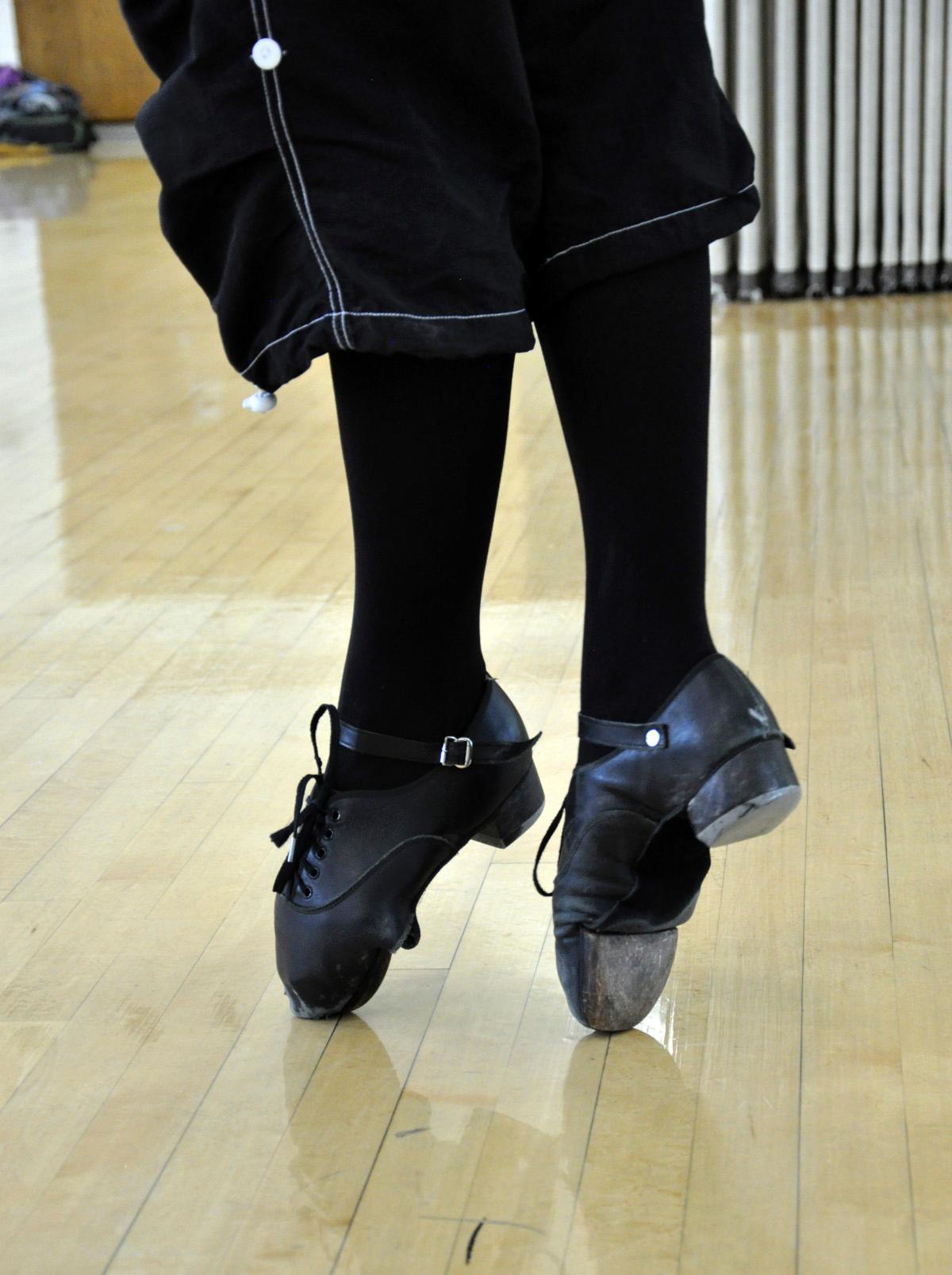New dance class taps to music of Irish heritage
The doors close as mystic music of Ireland fills the room. The students gather, and the Irish dance class prepares for another unique class.
“It’s the most beautiful art,” said Terena Lund, former Aggiette and director of An Tus Nua, the Logan Irish dance academy. “It takes my breath away.”
One of USU’s newest courses is Irish dance. Undergraduate Hannah Thompson, who is majoring in English education and minoring in physical education coaching, is teaching the class. Thompson has been dancing since she was five years old. She was first inspired to begin the artform after seeing a performing group at a local festival, she said. As a child, she began dancing with a company in Salt Lake City and continued with it for 13 years, she added.
“I love performing, and I used to perform at senior centers, elementary schools and community festivals, giving people a chance to see something they’re not familiar with,” Thompson said. “I think it’s a really fun thing to watch and listen to. I love performing and the community connection.”
Honors Program leaders first approached Thompson to teach the classes last spring. She was qualified to teach this class because she also performs as a part of a dance company called Inishfre Irish Dance. Inishre performs three to four times a year throughout Utah and Idaho.
The class offered at USU is for all skill levels and requires no hard or soft shoes. The costumes for USU’s club are nothing like those required in a professional group like Inishfre. Hard-toed dancing shoes are made of fiberglass. The hard toes make a sound lighter than a tap shoe when danced in. Soft shoes are used for a more feather-like, lyrical performance.
Lund said that Irish dancing first began in Ireland when dance masters would teach children in villages. They would have contests and dances on Sundays, and the town that had an exceptional dance master was highly revered. The better the dance instructor, the better dancers were trained in that town. It is said that the Irish hold this art dear, and symbols are intertwined into the dance steps. Lund used the example of Celtic Knots, which is why Irish dancers do a cross over with their legs, trying to recreate the look of a knot.
According to Lund, British invaders wanted to take away Irish traditions, but the Irish would not let their blood be dilluted. She said the Irish continued to practice a passion for dance. It is said, she added, that perhaps dancing with their arms to their sides helped them dance less conspicuously.
If a soldier passed by the window, the only thing that could be seen were the villagers’ arms, straight down. This created the illusion they were just standing and not dancing. Some of the dances carried on today are more than 100 years old. The Irish Dance Commission has written different dances in a book to protect and preserve them, Lund said.
“It turned out to be exceptionally fun and actually doable,” said class member Julia Gillespie, who is majoring in secondary math education.
In regard to her class, Thompson said she hopes students learn to revere the ancient art form. “(I want) students (to) gain an appreciation for it, to be able to look at an Irish dance and recognize the techniques and steps that they’ve learned in their own classes, and be able to continue with their Irish dance step education more and more, beyond my class,” she said.
Class member Mariska Romney, a music education major, said, “I’ve always wanted to take Irish dance, so I was excited. I am so impressed about how far we’ve come. It’s nice that everyone no matter what experience they’ve had before is able to do it.”
Irish dancing is a long-standing historical tradition in its country of origin. It’s alive and practiced in the homeland as well as in America.
“Give it a try,” Thompson said. “It’s a unique experience, I’m having such a good time teaching it, and I think the class is really enjoying it as well. It’s something that really impresses people — something different. It’s a great experience.”
—delayne.locke@aggiemail.usu.edu

